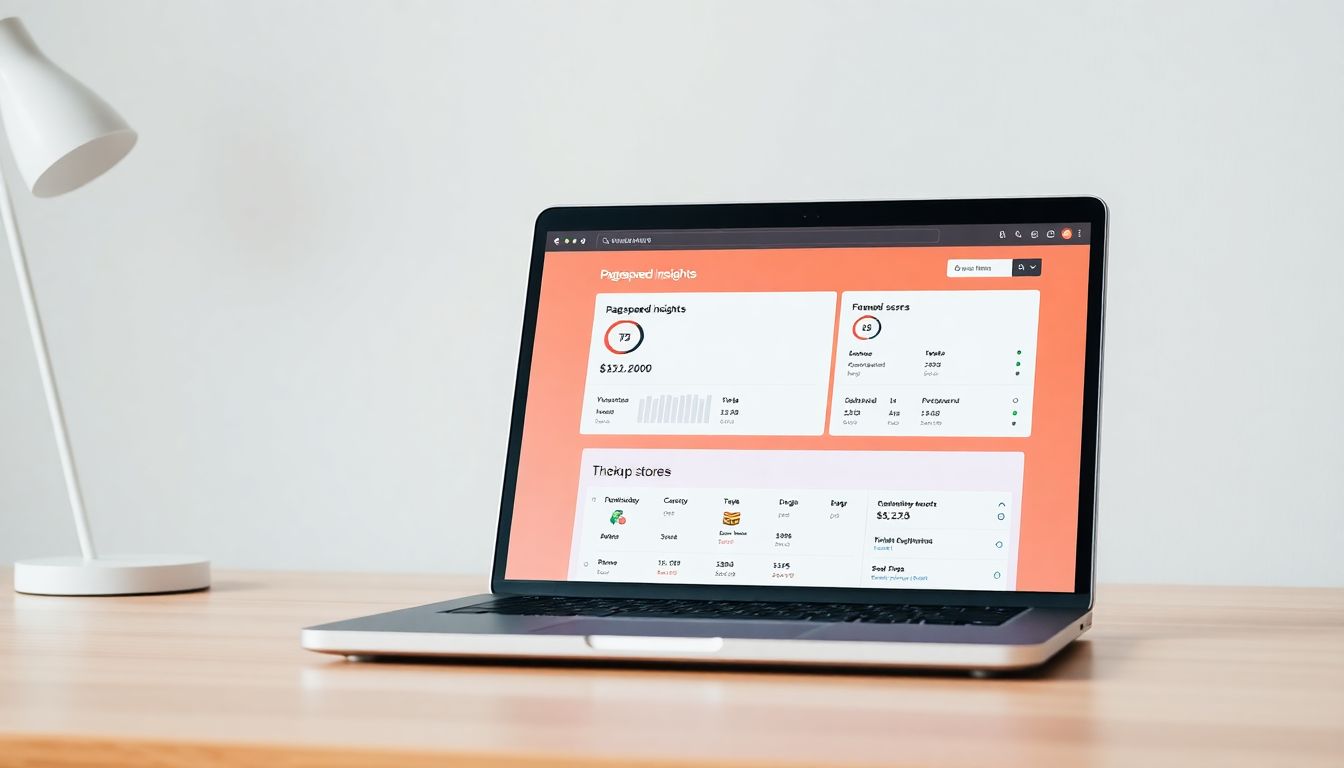
Skyrocket Your Website's Performance: A Deep Dive into Pagespeed Insights
Website speed is more than just a number; it’s a vital component of online success. Fast-loading sites keep users happy and engaged, while slow ones can drive them away. In today’s digital age, speed has a direct influence on how search engines rank your site. If you want to boost your rankings, improving your website speed using tools like Pagespeed Insights is essential.
The Critical Role of Website Speed
The Impact of Speed on User Experience and SEO
When users visit your site, they expect it to load quickly. Research shows that a delay of just one second can lead to a 7% reduction in conversions. Google also factors in website speed when determining search rankings. If your site is slow, you might find it hard to compete.
The Cost of Slow Loading Times: Lost Revenue and Conversions
Slower sites mean fewer visitors and lower sales. For eCommerce businesses, this can translate into significant lost revenue. If your site doesn't meet user expectations for speed, potential customers may abandon their carts and leave your page. The numbers are staggering—reports indicate that 79% of unhappy customers won't return after a poor experience.
Understanding Google's Pagespeed Insights Tool
Pagespeed Insights is a free tool provided by Google that evaluates your website's performance. It gives you insights based on both real-world and simulated data and offers suggestions for improvement. Understanding how to use this tool can be a game changer for your website's speed.
Decoding Pagespeed Insights Scores: Field Data vs. Lab Data
Understanding Field Data: Real-World Performance Metrics
Field data provides insights based on real user experiences. It shows how your website performs in the wild, considering variations like different devices and network conditions. This data helps reveal true performance issues.
Interpreting Lab Data: Simulated Performance in Ideal Conditions
Lab data, on the other hand, is gathered in a controlled environment. It simulates how your site would perform under ideal conditions, allowing you to test various changes without real user input. This can help identify specific issues that could slow down loading times.
Reconciling Field and Lab Data for a Holistic View
To optimize your website, consider both field and lab data. Combining these insights gives you a complete picture of performance, helping you determine what changes will have the greatest impact.
Identifying and Addressing Performance Bottlenecks
Diagnosing Slow Loading Images and Optimizing for Web
Images are often large and can slow down loading times. Make sure they are properly sized and optimized. Use formats like WebP for better quality at smaller file sizes, which will speed up your site significantly.
Optimizing CSS and JavaScript for Enhanced Loading Speed
CSS and JavaScript can also hinder performance. Minimize their size by removing unnecessary characters and comments. You can also use asynchronous loading to prevent these files from blocking page rendering.
Leveraging Browser Caching for Faster Subsequent Loads
Browser caching lets you store certain elements on a user's device. This way, when they return to your site, the page loads faster since they won’t need to download everything again. Set appropriate cache-control headers to maximize this advantage.
Mobile Optimization: A Crucial Factor in Pagespeed Insights
Ensuring Mobile-Friendliness Through Responsive Design
With more users accessing websites through mobile devices, it’s crucial to ensure your site is mobile-friendly. Use responsive design techniques so your site adjusts smoothly to any screen size. This not only improves usability but also enhances your Pagespeed Insights score.
Optimizing Images for Mobile Devices: Size and Format Considerations
Mobile users often have slower connections, making it essential to optimize images for mobile. Compress images and use responsive formats to ensure quick loading, improving user experience across devices.
Minimizing Render-Blocking Resources on Mobile
Render-blocking resources can slow down mobile loading times. Make sure to streamline your code and load only what’s necessary for immediate display. This will speed up the time it takes for users to see your content.
Leveraging Content Delivery Networks (CDNs) for Speed Enhancement
How CDNs Improve Website Speed and Availability
Content Delivery Networks store copies of your site at various locations around the world. This means that when someone visits, they download the content from a server close to them, speeding up loading times.
Choosing the Right CDN for Your Needs and Budget
Not all CDNs are the same. Research options based on your website’s needs and budget. Some popular choices include Cloudflare, Akamai, and Amazon CloudFront.
Implementing a CDN: Step-by-Step Guide
- Select a CDN provider.
- Set up an account and configure your CDN settings.
- Point your domain to the CDN.
- Test your website speed before and after implementation.
Advanced Strategies for Optimizing Pagespeed Insights Scores
Lazy Loading for Enhanced Performance on Long Pages
Lazy loading delays the loading of images and videos until they are needed. This technique can significantly enhance your page speed, especially for long pages with many media elements.
Implementing HTTP/2 for Faster Data Transfer
HTTP/2 allows for faster transfer of data. By switching from HTTP/1.1 to HTTP/2, you can load multiple elements simultaneously, reducing wait times for users.
Minifying HTML, CSS, and JavaScript
Minifying files removes unnecessary spaces, comments, and characters. This reduces file sizes, helping your site load more quickly.
Conclusion: Achieving Peak Performance with Pagespeed Insights
Key Takeaways: Prioritize User Experience and SEO Success
Website speed is critical for both user experience and SEO. By optimizing performance with tools like Pagespeed Insights, you can attract more visitors and improve conversions.
Continuous Monitoring and Optimization for Long-Term Success
Improving speed isn’t a one-time task. Regularly monitor your site and make adjustments as needed. This consistent effort will pay off in the long run.
Resources for Further Learning and Improvement
By focusing on these strategies, you can enhance your website's speed and overall user satisfaction, ultimately leading to greater online success.




